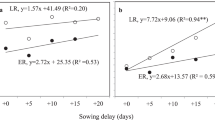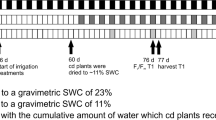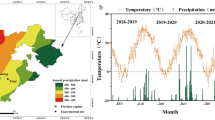Abstract
DORE1 has recently reported the response of a Malayan rice, an ‘indica’ variety of Oryza sativa L., to small differences in photoperiod. I have obtained similar results with West African upland cultivated rices, varieties of Oryza sativa L. and Oryza glaberrima Steud. The latter is the main indigenous rice cultivated in Northern Nigeria. Monthly sowings (May to October) of two varieties of O. glaberrima in Ibadan—latitude 7° 26′ N.—showed marked variation in time to ear emergence from sowing date, the later sowings flowering earlier. The time between sunrise and sunset at Ibadan varies from 11 hr. 40 min. in December to 12 hr. 33 min. in June.
This is a preview of subscription content, access via your institution
Access options
Subscribe to this journal
Receive 51 print issues and online access
$199.00 per year
only $3.90 per issue
Buy this article
- Purchase on Springer Link
- Instant access to full article PDF
Prices may be subject to local taxes which are calculated during checkout
Similar content being viewed by others
References
Dore, J., Nature, 183, 413 (1959).
Chandraratna, M. F., New Phytol., 53, 397 (1954).
Bünning, E., “Vernalization and Photoperiodism”, 161, ed. by Murneek, A. E., and Whyte, R. o. (Waltham, Mass., 1948).
Njoku, E., J. W. African Sci. Assoc., 4 (1958).
Author information
Authors and Affiliations
Rights and permissions
About this article
Cite this article
NJOKU, E. Response of Rice to Small Differences in Length of Day. Nature 183, 1598–1599 (1959). https://doi.org/10.1038/1831598a0
Issue Date:
DOI: https://doi.org/10.1038/1831598a0
This article is cited by
Comments
By submitting a comment you agree to abide by our Terms and Community Guidelines. If you find something abusive or that does not comply with our terms or guidelines please flag it as inappropriate.



